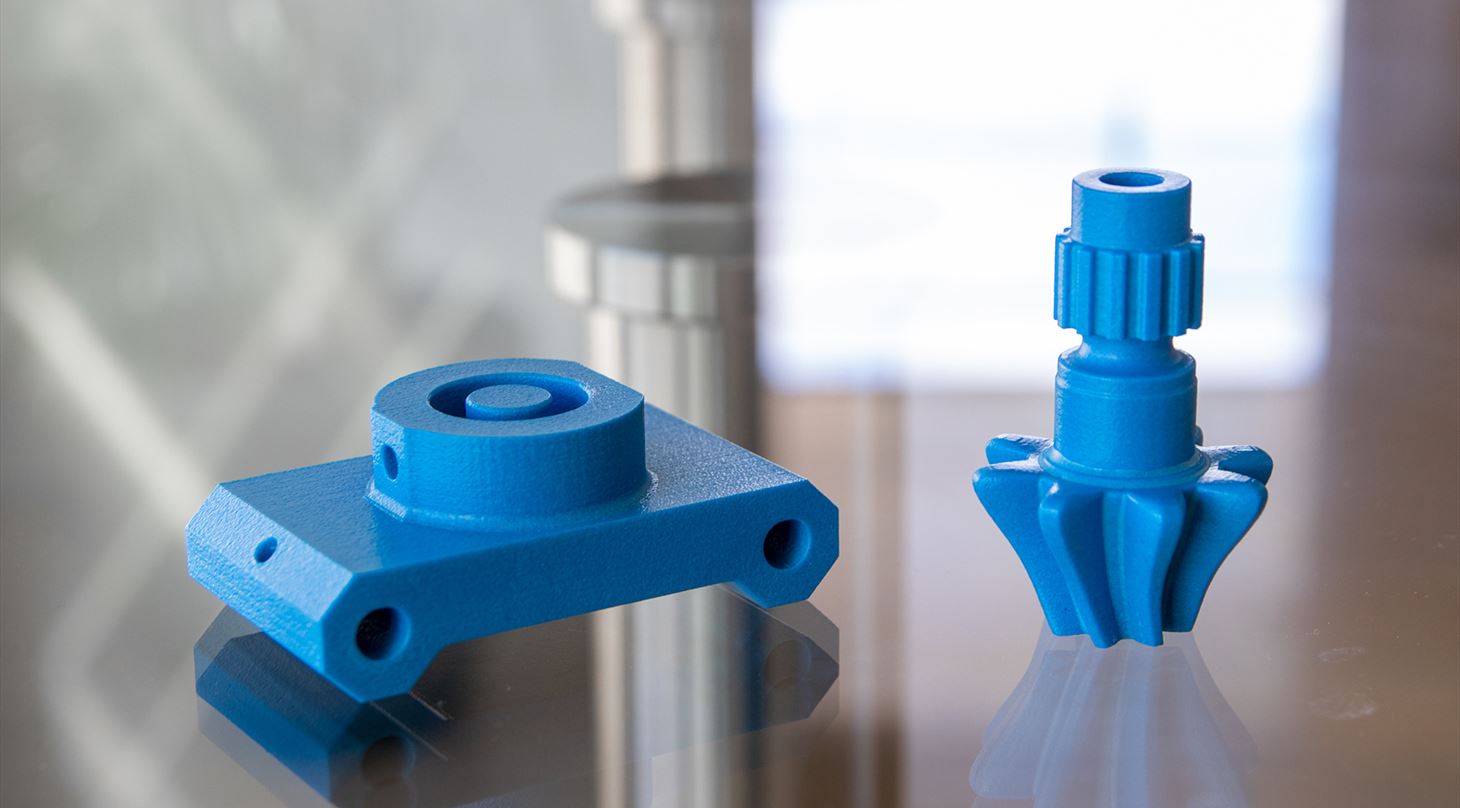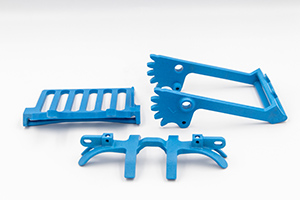
New blue powder pushes the boundaries of 3D printing for the food industry
With the development of a new blue nylon powder that is approved for food contact, the Danish Technological Institute is once again helping to push the boundaries of 3D printed components for the food industry. The blue colour of the powder allows you to print parts that are visually detectable. At the same time, the powder is both metal and X-ray detectable, so it significantly increases the safety of food production.
A brand new, blue nylon powder for 3D printing will now make it easier to detect unwanted components in food production. The Danish Technological Institute has developed the new material to meet the food industry's desire for safety. The new powder brings together high hygiene and high food safety in one product - and it is approved for food contact in both Europe and the USA.
Read more about 3D printing for food contact
- It is something that we have seen a need for in the food industry and something that does not yet exist within 3D printing, says Morten Lisberg Jørgensen, consultant and 3D printing specialist at the Danish Technological Institute. In the video below he tals about the benefits of the blue powder called Blue DP.
More properties in the same powder increase food safety
The Danish Technological Institute has previously developed metal detectable nylon powder, and there is also blue powder on the market which is visually detectable - but the combination of these properties is completely new within 3D printing using upcycled powder. The powder that has been developed by the Danish Technological Institute consists of white nylon powder, some metal powder, and some blue nylon powder which gives the blue colour that is in demanded in the food industry.
Adding the blue colour to the metal detectable nylon gives the added value that customers can easily see it visually. You often have lines in a production where there is no metal detector, and then it makes sense that the 3D printed parts are blue, so that it is easier to see in the food if small pieces should break off
- Morten Lisberg Jørgensen, Danish Technological Institute
The metal content in the powder also makes it possible for a metal detector or X-ray scanner to capture even small granules down to 1x1 mm size.
3D printing has several hygienic advantages
 3D printing already offers a number of hygienic advantages. This is mainly due to the enormous design freedom, which makes it possible to produce components almost without joints. Fewer joints also equal fewer places where bacteria can accumulate, and at the same time it makes cleaning easier, as there are less parts to take apart. 3D printed components from the Danish Technological Institute also receive a so-called 3S treatment (Super Smooth Surface), which seals the surface and makes it water resistant – this makes cleaning even easier.
3D printing already offers a number of hygienic advantages. This is mainly due to the enormous design freedom, which makes it possible to produce components almost without joints. Fewer joints also equal fewer places where bacteria can accumulate, and at the same time it makes cleaning easier, as there are less parts to take apart. 3D printed components from the Danish Technological Institute also receive a so-called 3S treatment (Super Smooth Surface), which seals the surface and makes it water resistant – this makes cleaning even easier.
- The combination of this new, exciting material and the design freedom of 3D printing is something very special and attractive for the food industry, says Morten Lisberg Jørgensen in conclusion.
The expectation is that the new powder will make 3D printing even more attractive to the food industry.